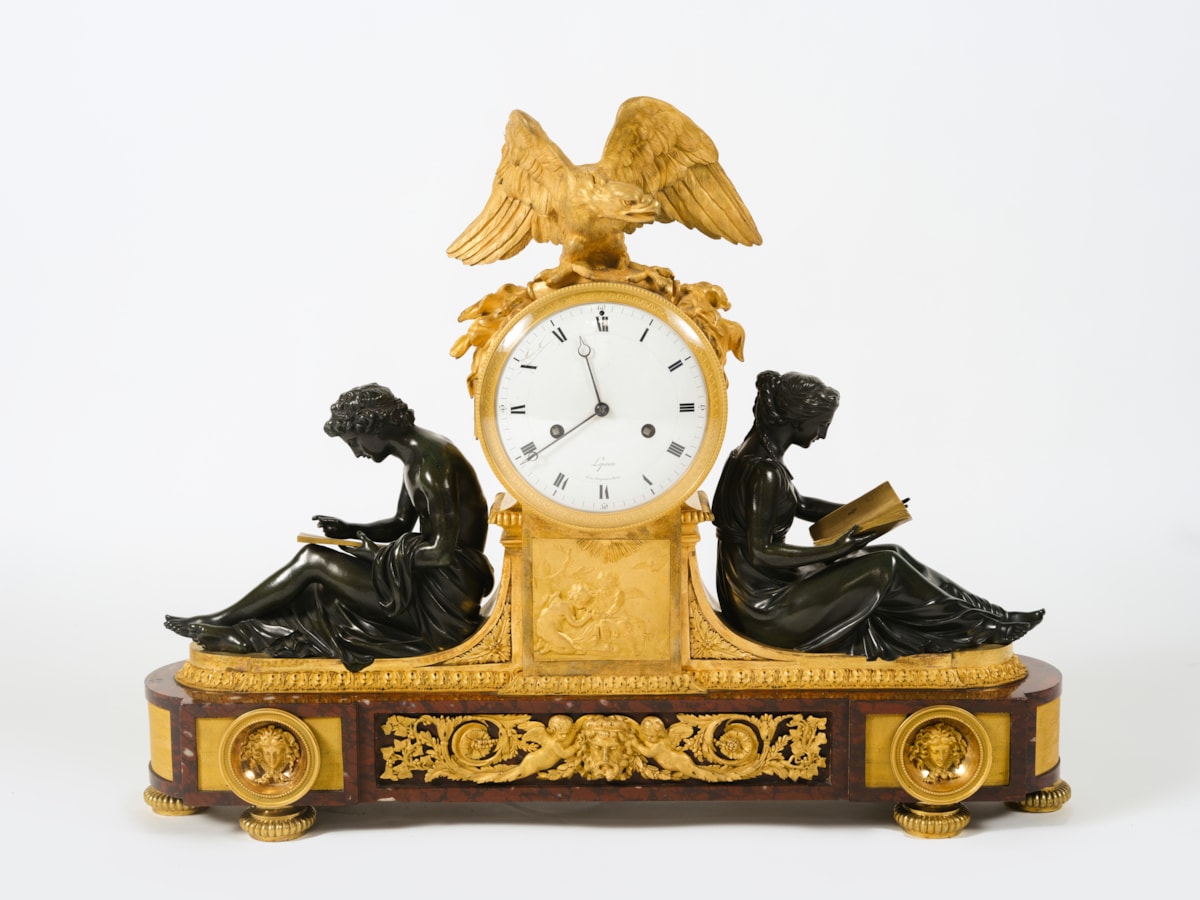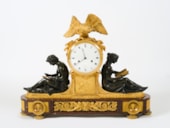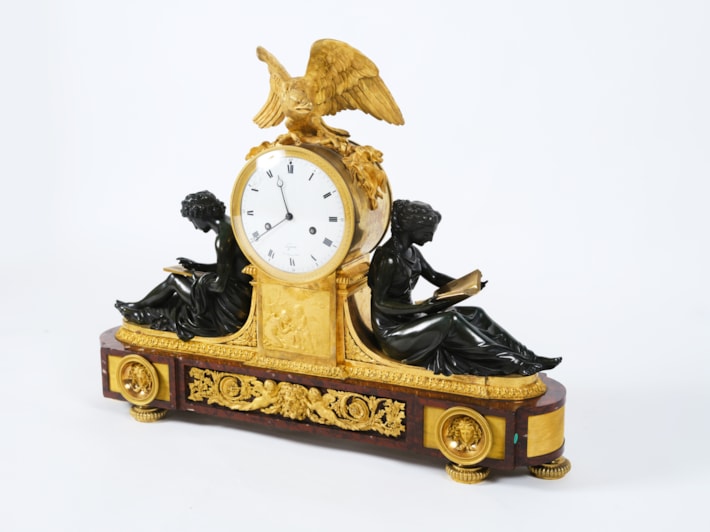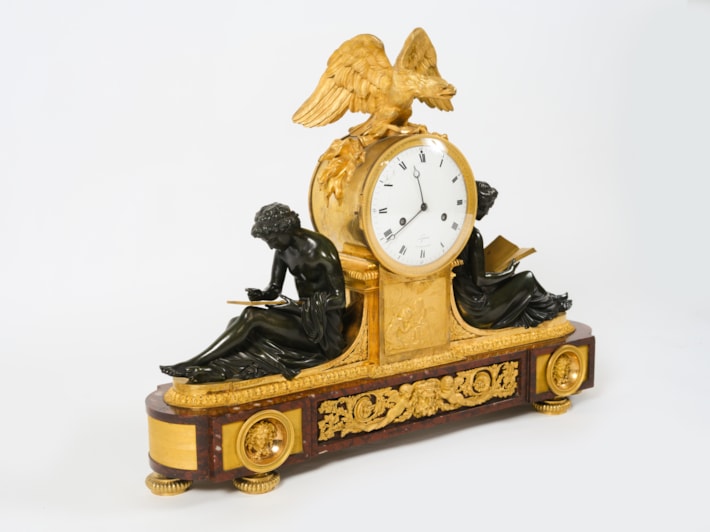
Jean-Joseph Lepaute (Bièvres 1770 - Paris 1846)
Pendule "à l'étude" d'époque Empire
Circa 1810
53 x 70 x 15 cm (20 ⁷/₈ x 27 ¹/₂ x 5 ⁷/₈ inches)
bronze marbre
Signé : Lepaute
Pendule à l’étude d’époque Empire,
Mouvement de Jean-Joseph Lepaute ( Bièvres 1770 – Paris 1846 )
Origine : Paris vers 1810.
Pendule dite « à l’étude » ou « aux maréchaux » en bronze doré et marbre griotte.
Cadran émaillé signé « Lepaute, Horloger de l’Empereur à Paris ».
Cadran surmonté d’un aigle aux foudres. Mouvement posé sur un socle à bas-relief avec putti jouant avec des colombes et encadré par deux figures en bronze patiné symbolisant l’étude et la philosophie. Socle en marbre griotte orné de rinceaux, de masques dont deux méduses, et d’amours.
Dimensions : 53 cm H x 70 cm L x 15 cm P
Cette pendule tient son nom « aux Maréchaux » des exemplaires dont Napoléon Ier fit cadeaux à ses Maréchaux.
Le modèle réalisé sous l’impulsion du marchand-mercier Daguerre a été exécuté par le bronzier François Rémond dans les années 1785, avec des figures originellement créées par Louis-Simon Boizot pour la Manufacture de Sèvres.
On en connaît plusieurs exemplaires, avec des variantes, conservées notamment au Palais de l’Élysée, au Ministère des Affaires Étrangères, au château de Versailles, au palais du Quirinal à Rome, au Victoria & Albert Museum à Londres ou au Palais de l’Ermitage à Saint-Pétersbourg.
Jean-Joseph Lepaute est l’héritier d’une importante dynastie d’horlogers français. Il fût d’abord Horloger du Roi, puis de l’Empereur. Il réalise l’horloge de la Bourse de Paris, et réalise des commandes impériales pour Saint-Cloud, Fontainebleau et Compiègne.
- Pierre Verlet, « Les bronzes dorés français du XVIIIe siècle », Paris, 1987, page 322.
- Pierre Kjellberg, « Encyclopédie de La pendule française du moyen age au XXe siècle » Les éditions de l’amateur; page 259.




